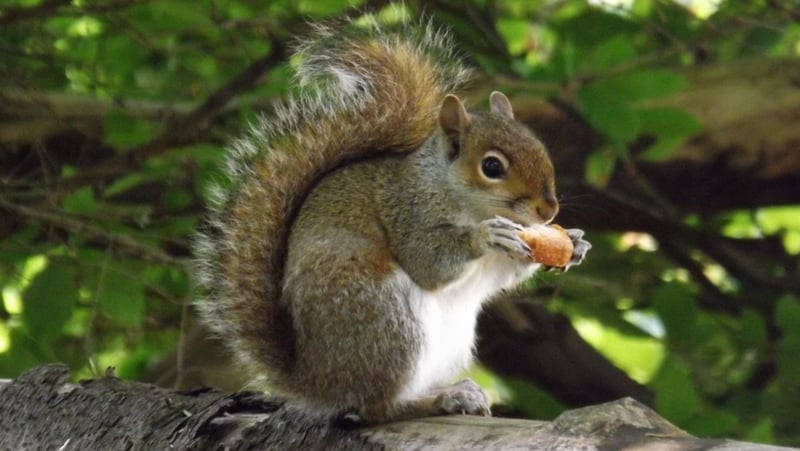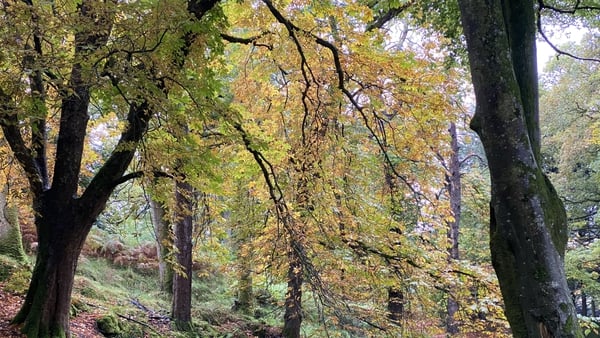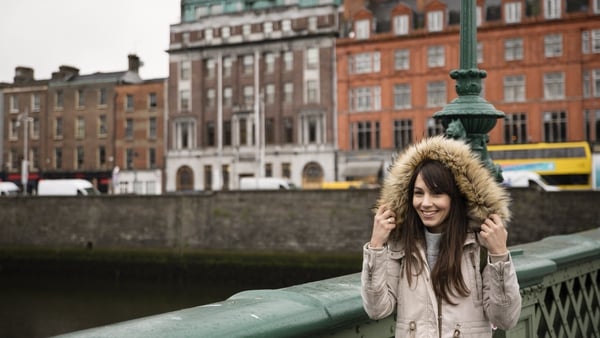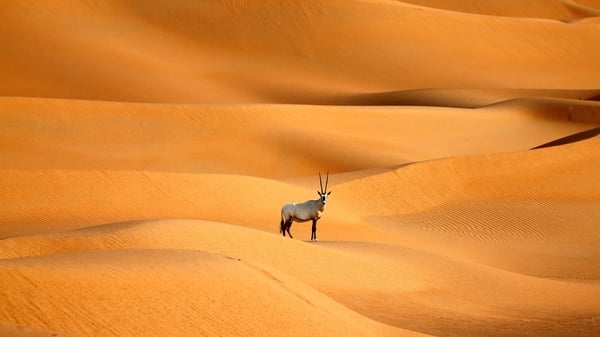Opinion: from Japanese knotweed and the Giant Hogweed to the grey squirrel and American mink, controlling and culling invasive species is a full-time job
Turn and run
Nothing can stop them
Around every river and canal their power is growing
Stamp them out
We must destroy them
They infiltrate each city with their thick dark warning odour
(Genesis "The Return of the Giant Hogweed")
That song by Genesis manages to capture the emotions that are often present in our discussion on invasive species. Invasive species are species that have been introduced, deliberately or accidentally, by humans to a region and in time have a negative impact on the economy, wildlife or habitats of the region.
The Giant Hogweed exhibits key traits of an invasive species. Introduced to Britain and Ireland in the 19th century as garden ornamental, it soon escaped to the wild and is now found on damp ground along river banks. My first "alien" encounter was with Giant Hogweed on an allotment in south county Dublin in the early 1980s. As I cut back the three metre tall giants, the sap from one left a long-lasting burn on my hand.
We need your consent to load this rte-player contentWe use rte-player to manage extra content that can set cookies on your device and collect data about your activity. Please review their details and accept them to load the content.Manage Preferences
From RTÉ Radio 1's Mooney Goes Wild, Eanna Ni Lamhna talks about the dangers of the Giant Hogweed with Dr. Joe Caffrey, Senior Research Officer with Inland Fisheries Ireland
But alien plants and animals are of concern for other reasons too. From an ecological perspective, the invasive species are often associated with the growing losses in biodiversity. Reviewing the impact of invasive species, Tim Blackburn and colleagues implicate them in up to 58% of events that have led to species extinctions. Most of these extinction events are on small islands and others argue this concern is misplaced with land use change and pollution playing a more significant role in the loss of species.
In Ireland a top ten list of "most unwanted" invasive species lists the Greater white toothed shrew, Himalayan balsam (Impatiens glandulifera), the American skunk cabbage (Lysichiton americanus), Coypu (Myocastor coypus), Asian clam (Corbicula fluminea), American mink (Neovison vison), Grey Squirrel (Sciurus carolinensis), Rhododendon (Rhododendron pontincum), Japanese knotweed (Fallopia japonica) and Giant hogweed (Heracleum mantegazzianum). Most have been introduced as garden plants or for their fur. The greater white toothed shrew might be paying its way as it is now a significant element in the diet of Barn Owls and Kestrels, but it is doing this to the cost of the native Pygmy Shrew, as is shown by the work of Allen McDevitt and colleagues of UCD.
But the management of invasive species is costly (€12bn per year in Europe alone), difficult, time consuming, and emotionally fraught. Sarah Crowley and colleagues found people engaged in culling of squirrels often found the work emotionally draining. The eradication of Coypu in England followed their introduction for their fur in the 1920s. By 1960, the population in East Anglia was estimated at almost 200,000. A campaign of trapping and culling began in 1981 and motivated trappers with a substantial bonus if eradication was achieved within 10 years. In Ireland much smaller populations of Coypu have been successfully controlled.
We need your consent to load this rte-player contentWe use rte-player to manage extra content that can set cookies on your device and collect data about your activity. Please review their details and accept them to load the content.Manage Preferences
From RTÉ Radio 1's Ryan Tubridy Show, an interview with Biodiversity Ireland Invasive Species Officer Collette O'Flynn about alleged sightings of the coypu in Dublin
Controlling invasive species is often about killing invasive species. While people don’t often protest at the control of rats, there are many who will be concerned about trapping and killing squirrels, hedgehogs or deer. In 1974, hedgehogs were introduced to the Scottish island of South Uist. Their job was to control slugs but, as the hedgehog population grew, they began to feed on the eggs of ground nesting waders whose populations then fell. Action by Scottish Natural Heritage involved the capture and killing of the hedgehog. This led to the formation of Uist Hedgehog Rescue and a campaign to have hedgehogs flown to the mainland rather than killed, which emerged as the favoured control technique in time.
My second hand-to-hand encounter with an invasive species was on a Rhododendron bashing expedition to Glenveagh National Park in Co Donegal in 1988 or so. Volunteers were met at Letterkenny bus station late one summer's evening and loaded into a battered Land Rover that took us into the wilds of Glenveagh. We spent a week cutting and burning the pest in an attempt to clear the oak wood floor and allow regeneration to happen. The campaign to control Rhododendron continues to this day.
My third encounter may be retrospective, but I claim it was done with the best intentions. The Invasive Species Specialist Group (ISSG) of the International Union for the Conservation of Nature publishes a list of the 100 worst invasive species from around the world and an invasive species of the week. The list featured Lumbricus terrestris, an earthworm native to northern European soils and a critical species in the development and maintenance of soil fertility across pasturelands, arable crops and in forests across Europe. Outside Europe, it has become established in North America, Australia and New Zealand and is seen to disturb the nutrient cycles of native woodland habitats.
We need your consent to load this rte-player contentWe use rte-player to manage extra content that can set cookies on your device and collect data about your activity. Please review their details and accept them to load the content.Manage Preferences
From RTÉ Radio 1's Mooney Goes Wild, a special report on invasive species and their effect on our ecosystem
As a student, I worked with Jim Curry on the introduction of this species and others to cutover raised bogs in the midlands. These peatland sites were not the normal habitat of L terrestris, so I am guilty of acting as an agent of dispersal.
However the most invasive species of all, Homo sapiens, is generally absent from these lists. A wave of extinctions have followed the earliest movements of modern humans across the planet. Paul S. Martin proposed what is called the overkill hypothesis, humans hunted the megafauna of America, Asia, Australia and the Pacific Island to extinction. An article by Todd Surovell and colleagues outlines the evidence for the hypothesis in compelling detail.
When Europeans settled in the Americas in the 15th century, they brought a wave of diseases with them which the native populations had no resistance to. The population of the continent may have fallen by 90% and this, suggest Alexander Koch and colleagues, led to a regrowth of forests and an increased uptake of CO2 with a resultant cooling of the atmosphere in the centuries prior to the industrial revolution.
From an ecological perspective, the invasive species are often associated with the growing losses in biodiversity
We can’t help ourselves Wherever we go, we are taking baggage and using plants and animals for our gain. But we need to take heed as Genesis warned us...
Mighty Hogweed is avenged
Human bodies soon will know our anger
Kill them with your Hogweed hairs
Heracleum mantegazzianum
Invasive Species Week takes place from May 13th to 17th
The views expressed here are those of the author and do not represent or reflect the views of RTÉ






